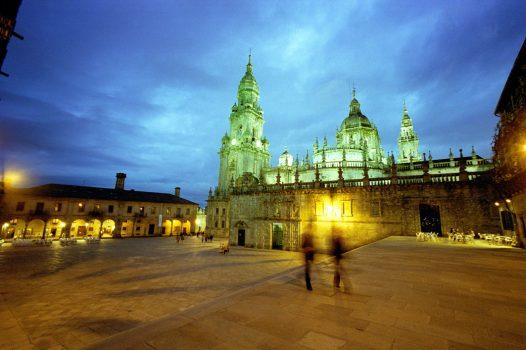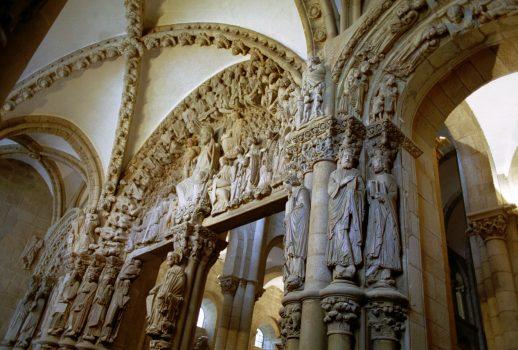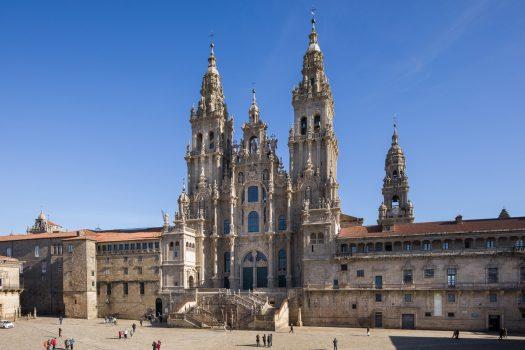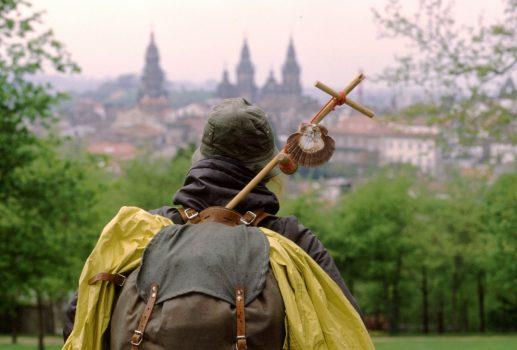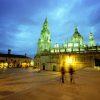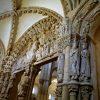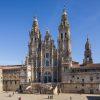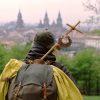The Spanish Pilgrim – Road to Santiago de Compostela
“El Camino de Santiago” was the most important religious and cultural route in Europe during the Middle Ages. Santiago de Compostela is the only route in the world to be designated a World Heritage Site by UNESCO. It was here in the beginning of the 9th century, a hermit called Pelagius saw a mysterious light shining over a Roman tomb forgotten in the middle of a forest. Very soon, the incredible news spread all over the Christian world: the tomb of St. James the Greater, had been discovered in a far site near the finis terrae, the end of the known Earth, in the northwest of Iberian Peninsula. After a few years, this site became a famous pilgrimage town, one of the most important of Christianity.
Explore the Road to Santiago de Compostela during this Holy Year
Read MoreOrigins of the pilgrimage
The history of the Camino de Santiago goes back at the beginning of the 9th century. At this moment, the discovery of the tomb of St. James changed the religious connotations of the Iberian Peninsula. Since this discovery, Santiago de Compostela became a peregrination point of the entire European continent. The Way was defined by the clearly set Roman routes that joined the Peninsula together. What was to follow was the vast human flow travelling towards Galicia, soon enough hospitals, churches, monasteries, abbeys and towns around the route. During the 14th century the pilgrimage began to decay, brought by wars, epidemics and the natural catastrophes.
The recovery of the route began at the end of the 19th century, but it is during the last quarter of the 20th century when the authentic contemporary resurge of the peregrination takes place. There is no doubt that the social and cultural revitalization but we cannot forget that the route has gained its prestige thanks to its spiritual value.
Santiago de Compostela; The home of St. James the Apostle
This beautiful city has arisen around the grave of St James the Apostle which was famously discovered by a farmer named Pelayo in a field in 813AD. Whilst here, discover the historic centre which is home to an abundance of tiny cobbled streets, pretty squares, monasteries, mansions, typical Galician houses and a historic university. With its Romanesque, Gothic and Baroque buildings, the Old Town of Santiago is one of the world’s most beautiful urban areas.
Join many of the Pilgrims from all over World and follow the Camino de Santiago to reach the city of Santiago de Compostela. For more tours to Northern Spain why not check out our Barcelona and the Jewels of Catalonia tour to see the Benedictine monastery of Montserrat, one of the most important religious retreats and is home to the ‘Black Madonna’.
Dates
Suggested itinerary
Day 1
Fly to Madrid
Upon arrival at Madrid Airport, you will be met and transferred to Hotel. Enjoy some free time to explore the Capital.
Day 2
Leon
This morning, your journey begins! Head towards Leon, famous worldwide for the fantastic churches including the Cathedral of Leon built in a Gothic style in the XIII Century and San Isidor Basillica built in the X Century are the most famous. After a guided tour, enjoy some free time to explore Leon before heading back to the hotel for dinner.
Day 3
Ponferrada
We continue on our journey to Santiago de Compostela with an overnight in Ponferrada, one of the most visited towns on the Camino de Santiago. Here, you will visit the ‘Castillo de los Templarios’, built by the famous ‘Order of the Templars’ in the XI Century. Afterwards, head to your hotel for dinner in Ponferrada.
Day 4
Santiago de Compostela
Here we are! This morning we will arrive in the beautiful city of Santiago de Compostela, a city that arose around the grave of St James the Apostle which was famously discovered by a farmer named Pelayo in a field in 813AD.
We start with a guided tour of the historic centre which is home to an abundance of tiny cobbled streets, pretty squares, monasteries, mansions, typical Galician houses and a historic university. The tour ends at the cathedral where St James is buried under the main altar. There will also be an opportunity to attend the Pilgrim’s Mass.
This afternoon, there is free time for us to discover the hidden treasures Santiago has to offer. Your tour guide will be hand to assist you.
Day 5
Rias Baixas
After enjoying a spiritual day, take a day of leisure on the Atlantic coast. Enjoy a boat trip through the ‘Rias Baixas’ a series of four estuarine inlets located on the southwestern coast of Galicia, close to the Portuguese border, famed for their fabulous wine. Onboard, enjoy a taste of the local delicacy, Mussels.
Day 6
Oviedo
On our way back to Madrid, we stop at another ‘must see’. The beautiful city of Oviedo. However, before enjoying the city, we will stop in a typical farm to have a taste of the local cheese, a speciality of the region; ‘Queso de Tetilla’. Afterwards, we then head into the city for a guided tour of the Capital of Asturias region. Point Alfa is the Gothic Cathedral; San Salvador, where we’ll see the Cruz de la Victoria, symbol of the victory against the Arabs in the VIII Century. Afterwards, you’ll have some free time to get your souvenirs before heading to the hotel for dinner.
Day 7
Madrid
And last but definitely not least, we head back to the Capital! Upon arrival in Madrid, enjoy a guided tour of the city, including highlights such as Plaza Mayor, Puerta del Sol, Puerta de Toledo, The Royal Palace, Almudena Cathedral and the Santiago de Bernabeau (entrance not included). Afterwards, enjoy some free time before heading back to the hotel.
Day 8
¡Hasta Luego Spain!
Transfer to the airport for your return flight home.
Suggested Hotels
We have a selection of hotels in the area to suit a range of budgets.
| 8 days / 7 nights | |
|---|---|
| All dates | Prices on request |

